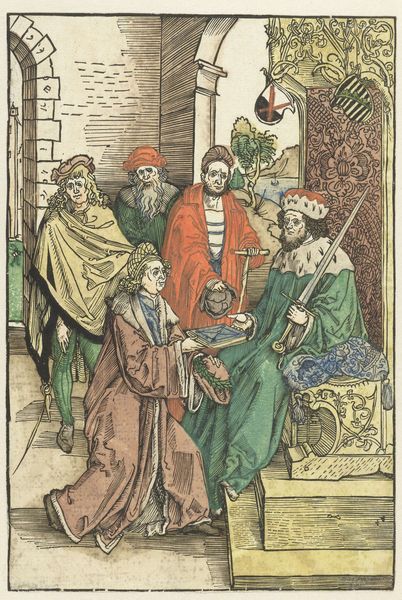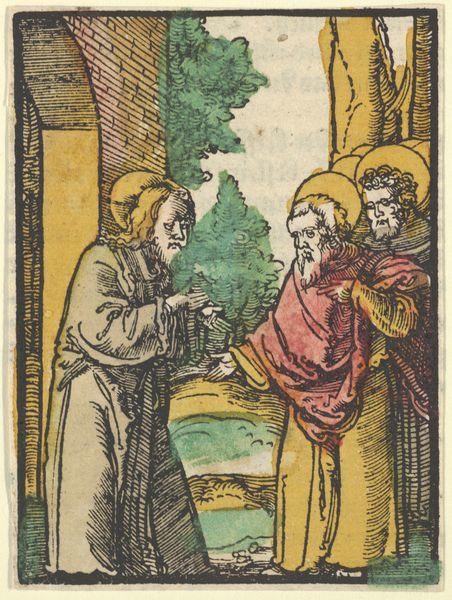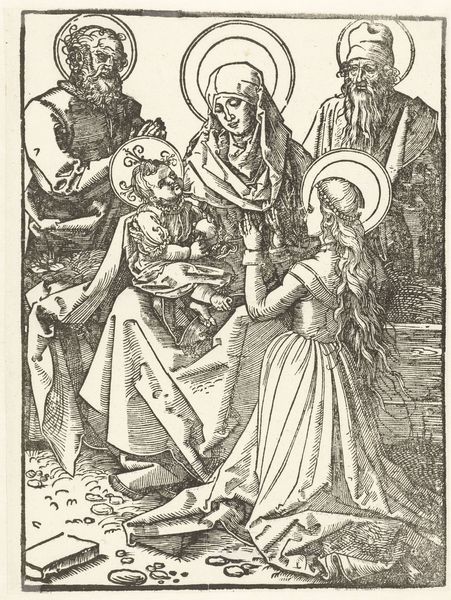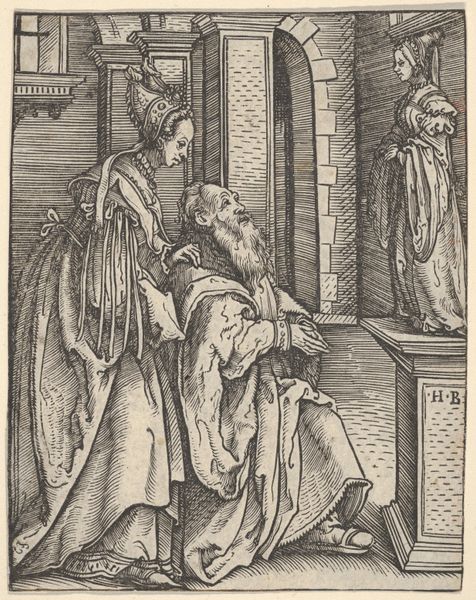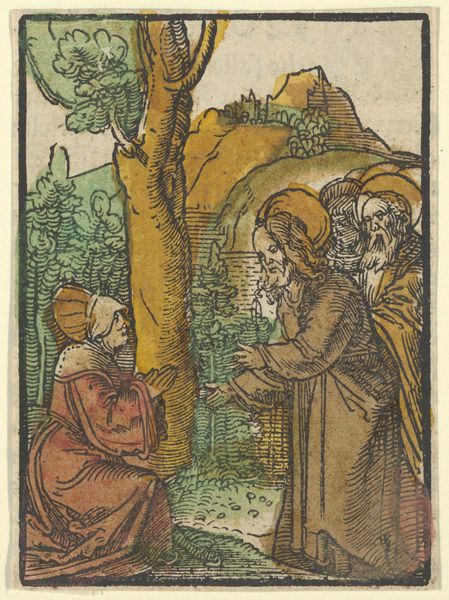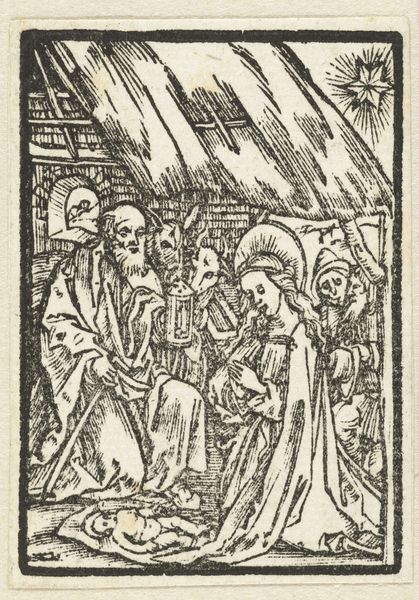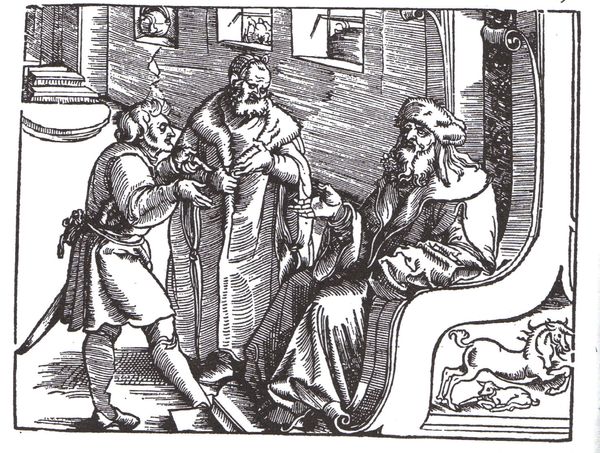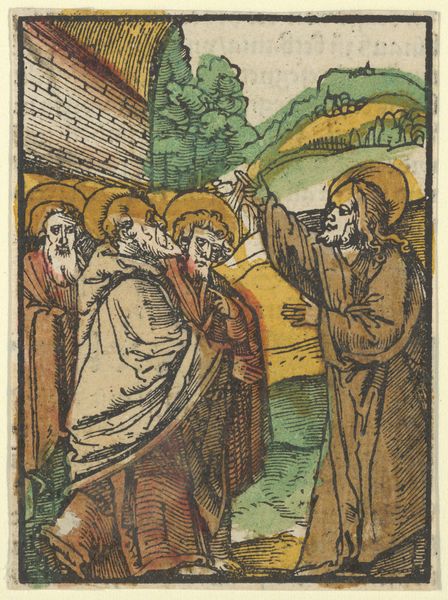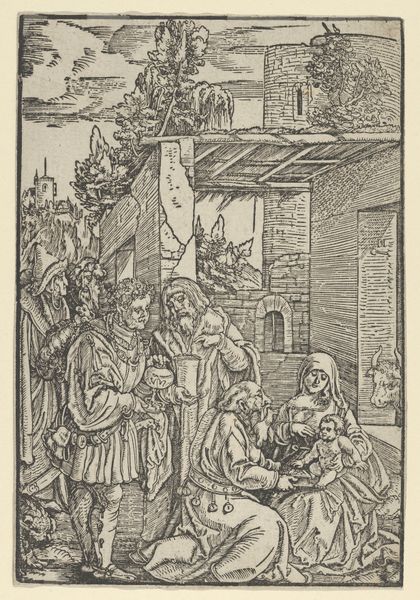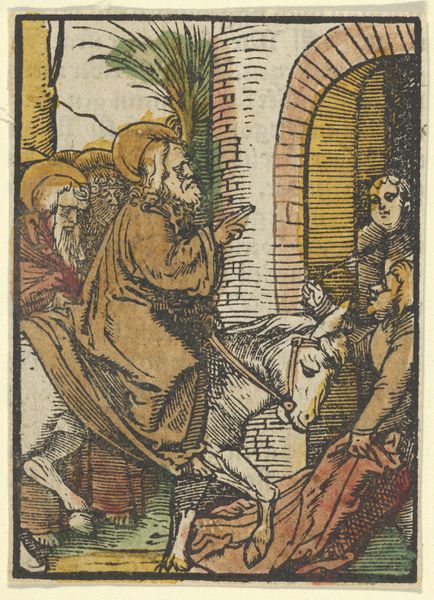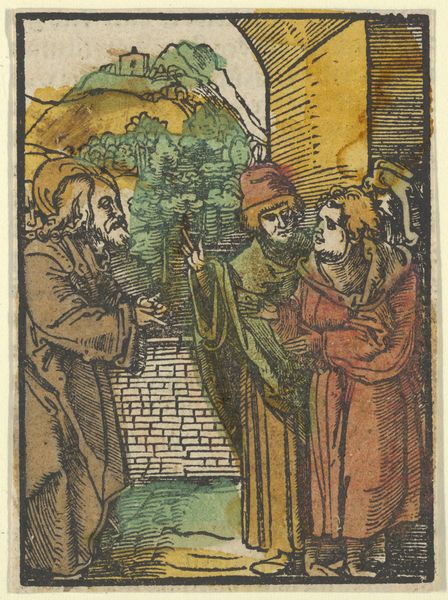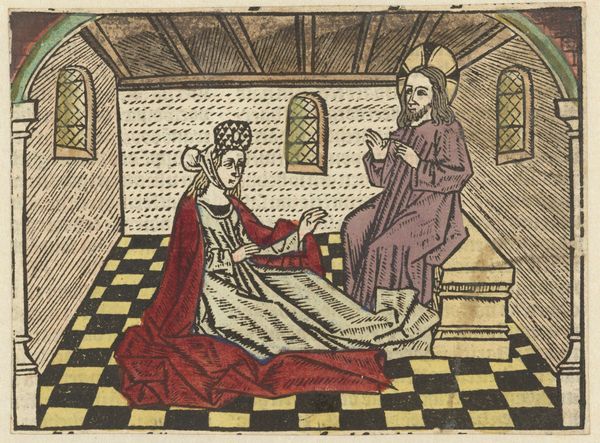
Das Plenarium oder Ewangely buoch: Summer und Winter teyl 1514
0:00
0:00
drawing, print, woodcut
#
drawing
# print
#
landscape
#
figuration
#
woodcut
#
men
#
history-painting
#
northern-renaissance
#
virgin-mary
Dimensions: Overall: 12 1/2 x 8 1/4 x 2 3/8 in. (31.7 x 21 x 6 cm)
Copyright: Public Domain
Curator: Let’s take a moment to observe "Das Plenarium oder Ewangely buoch: Summer und Winter teyl," a work from 1514 by Hans Schäufelein currently held here at The Met. Editor: Right off the bat, there's a stillness to it that almost feels...staged? Like everyone's posing in a Renaissance Christmas card. Though the colors really pop, especially that fiery red robe. Curator: Precisely! This piece employs a woodcut technique which was highly influential at the time, particularly in disseminating religious narratives. Schäufelein played a key role in bringing printing innovations into service of popular piety and humanist interests. Editor: Popular piety, huh? The landscape peeking through that opening is surprisingly cheerful, considering the solemnity of the moment. It's as if Schäufelein's winking, reminding us there's life and color even amid these heavy theological themes. Or, am I projecting? Curator: Perhaps both. The composition cleverly integrates classical architectural motifs alongside Northern Renaissance aesthetics, creating a layered symbolic landscape. Observe how the three Magi are depicted in such detail, with each expressing reverence. It signifies the international acknowledgment of Christ's birth, aligning with the global reach the Church aimed to embody. Editor: Right, that historical "reach." I get it. Still, those aren’t very flattering portraits. That curly haired dude behind the kneeling king has some serious side-eye happening. But even in a religious piece that may seem distant from today's aesthetics and concerns, one feels that intimate human connection – something between a gentle promise and something that looks like silent condemnation in these figures' faces. Curator: An interesting point. The "Plenarium" reminds us of art’s capacity to shape—and, in turn, reflect—cultural values. From dissemination to personal faith to political messaging, prints served many purposes. Editor: Ultimately, "Das Plenarium" invites us to ponder faith, art, and history's intricate relationship. Something very interesting for an afternoon walk.
Comments
No comments
Be the first to comment and join the conversation on the ultimate creative platform.
